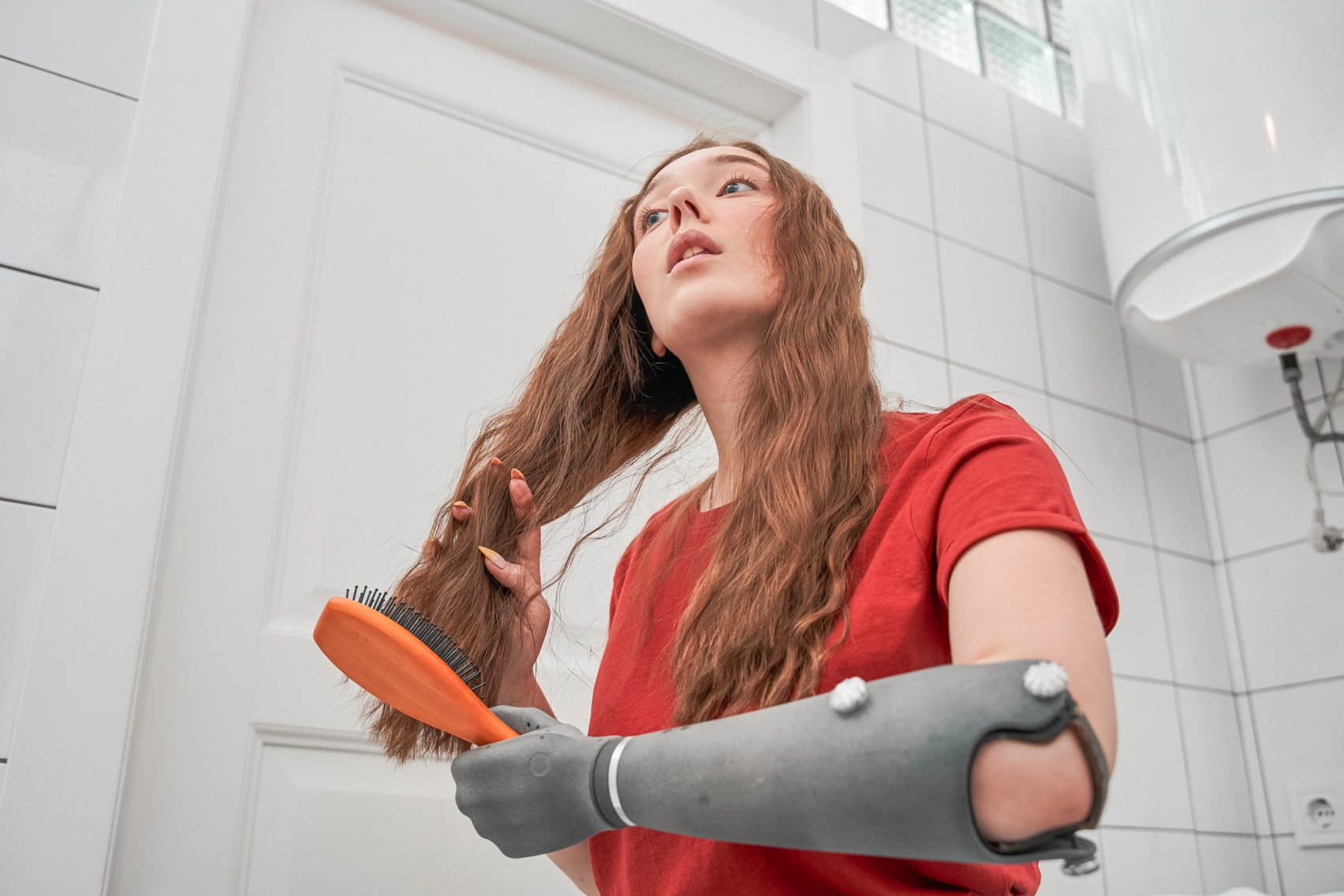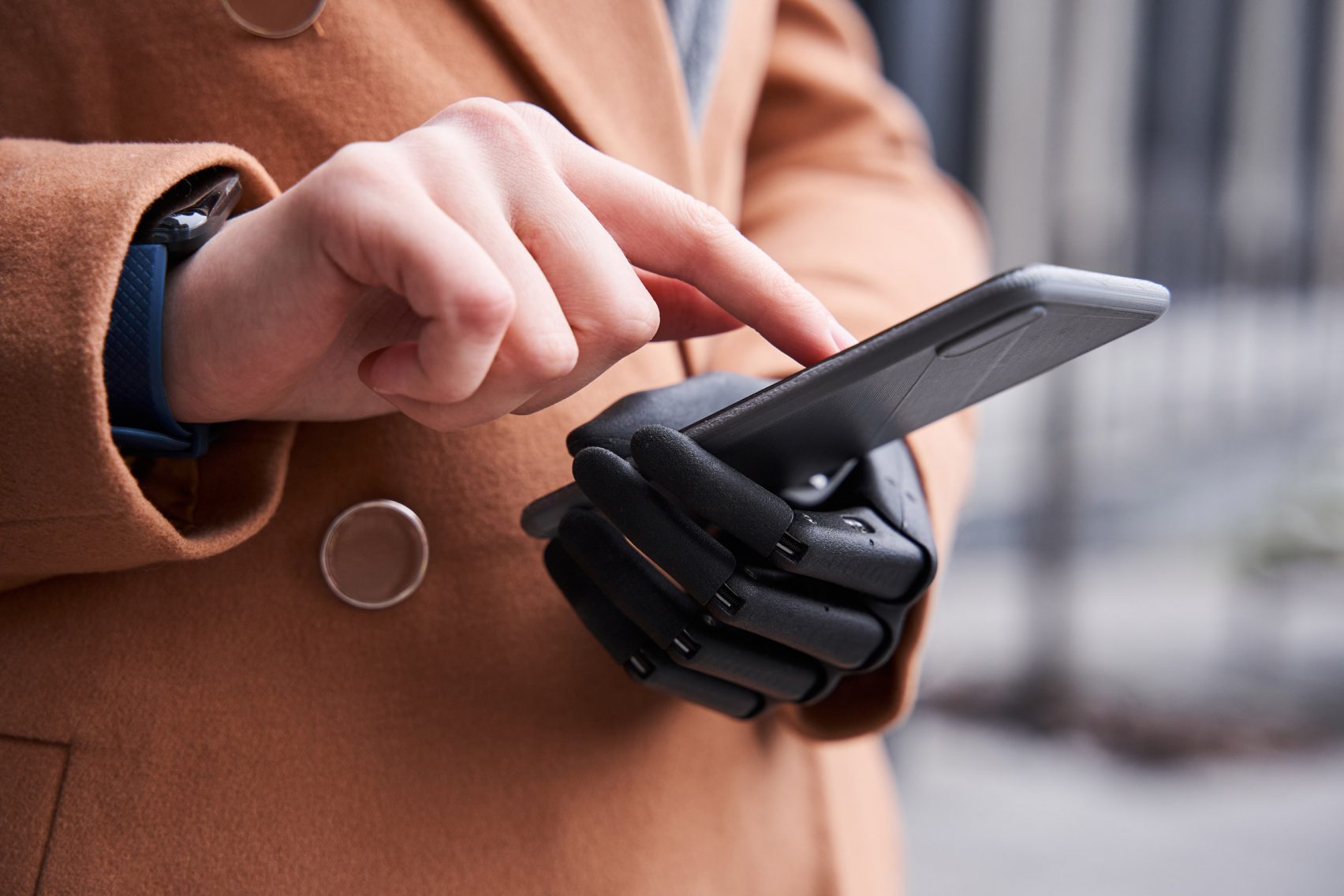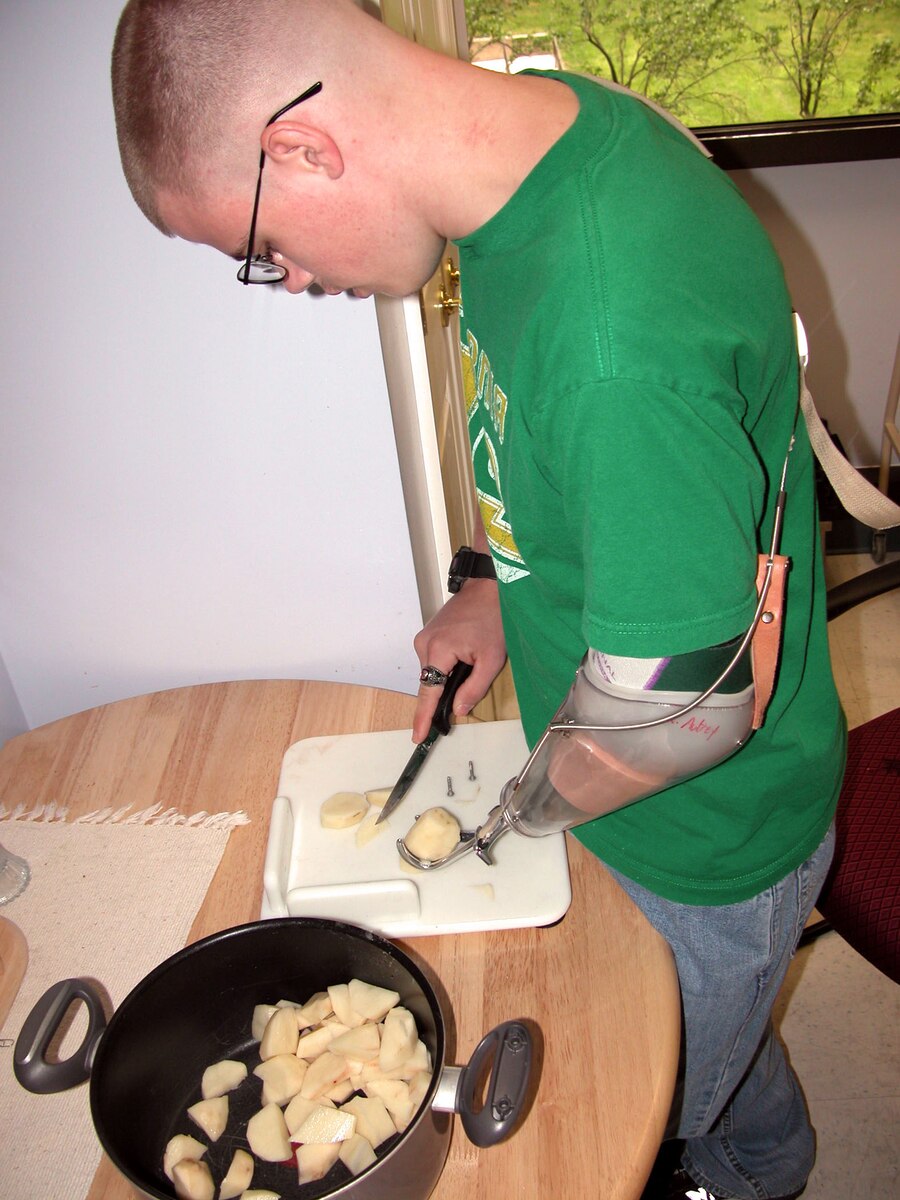An ongoing experiment
The “Esper Hand”
“We sought to create a light and durable hand with human-like dexterity that learns over time and can help people with limb differences live their best lives confidently.”
Dima Gazda, co-founder of Esper Bionics
In 2021, New York-based engineering startup Esper Bionics developed a new incredible bionic hand that seems to work three times faster than many of all its other competitors currently available on the market.
In the video below, a user called Nika performs a series of tasks with her bionic Esper Hand, ranging from grabbing small objects to wielding a beefy knife.

Esper Hand has 5 flexible and modular fingers and weighs only 380 grams, making it lighter than a human hand and many limb prosthetics on the market. It is composed of a combination of aluminium, fluoroplastics, polyoxymethylene plastic, titan, nylon, bronze, steel and 3 different types of silicone. On top of interfacing seamlessly with its wearer, Esper hand has also 4 different sizes and 5 colours.

This hand can rotate and grip in several ways and the modular fingers can form multiple common grasps including cupping, flexing, making a fist and pinching fingers together. This allows the wearer to perform a wide range of movements for day-to-day tasks, including using kitchen utensils, opening bottles, tapping a phone screen or even driving a car!
This prosthetic can also be easily disconnected via a further mechanism so that the wearer can switch it on and off according to their needs, such as while changing clothes.
How does “Esper Hand” work?

This bionic hand was developed by conducting durability tests on 3D-printed versions of the hand to adjust its size and shape. Esper Hand makes use of an electromyography-based brain-computer interface (BCI), a computer-based technology system that collects brain information or activity, in order to trigger muscle contraction. This type of technology is not completely new, as it has already been used by paralysis patients to control machines by simply their thoughts.
When the wearer wants to control their hand, the brain sends electrical signals to specific muscles in order to activate them. Esper hand is able to simulate this brain control through over 30 non-invasive myoelectric sensors that connect the stump socket to the wearer’s skin. These are the myoelectric inputs for movement which generate electrical signals exactly as those naturally generated by one’s muscles to trigger action in the hand.
What makes “Esper Hand” so special?
“Thanks to all the collected data, the platform updates the control algorithms of the hand so that next time the preferred grip will have a higher priority to be chosen in the same situation”
Dima Gazda, co-founder of Esper Bionics
This prosthetic works with intuitive self-learning technology that can predict intended movement faster than similar prosthetics, therefore improving its performance over time on the same user.

This occurs via a specific phone app that sends all the myoelectric inputs to Dubbed Esper Platform, a cloud based-platform managed directly by Esper Bionics, which collects and stores data about the user’s movements. This allows its creators to study and improve the algorithms that translate those inputs into digit movements so that the wearer’s next action will be quicker predicted and performed, basically like a “learning” mechanism.
Personal reflection

After attending a university workshop where the professor showed us examples of prosthetics, I felt quite fascinated by the unrealistic appearance of a prosthetic hand that was used by a double amputee to cut a carrot. A example of this hand is shown in the picture on the right. It is very common in US rural areas because it is extremely functional. However, it is not very aesthetic in appearance since it looks more like a very old hook than a beautiful human hand.
The same day of the workshop, the video about Nika using Esper Hand appeared on top of my YouTube page. That girl seemed so happy and comfortable using Esper hand (which really resembles a human hand!) that I chose to dig down the topic.
During the research, I felt quite shocked by knowing the possibility of a way to improve a prosthetic’s performance via more efficient algorithms. I had never thought about it before, and I realised that this is a very clever and non-invasive method not only to improve the prosthetic, but also to learn more about research of human movements in order to increase scientific output!
This realisation inspired the title of this post: “Can prosthetics learn over time?”. Incredibly, the simple answer was: “Yes!”. However, this was not enough for me, and I started to wonder about humans made by prosthetics that I had seen in Marvel movies, such as incredible superheroes fighting against the most powerful devils in the world to eventually restore peace.
What if this bionic hand could actually perform even BETTER than the natural hand?
I thought that if prosthetics not only could really improve their performance over time to equate that of the natural hand, but also overcome the performance of the natural hand thanks to outstandingly efficient algorithms… This might open the doors for a new technological era in the AI and robotics field.
However, computers and AIs are much quicker at performing logical calculations and computations but not interpreting signals from the outside world to generate an adequate response, as our brain does continuously. Some studies have actually proved that the brain has higher computational power efficiency than electronic computers by orders of magnitude. This is why computers and AI architectures are all modelled in an attempt to better emulate the human brain!
Getting to know the Esper hand story has completely challenged my previous understanding of the potential of prosthetics. I learned that prosthetics are not static entities but can “learn” over time, although in a completely different way than a human brain. This triggered me so many unsolvable questions and made me wonder in my fantasy. In the future, I will keep this curious attitude by letting my thoughts wander for a while to come up with interesting observations that can lead me to further research and understanding, which is not necessarily related to the initial topic.

Anyway, I will also need to be careful when I should stop my fantasy to be more realistic in order to avoid an unproductive combination between fantasy and reality. For example, the presence of “superhumans” looks still very far from reality, as many of our brain’s processes are still unknown. This strongly affects our knowledge of even the most powerful and quickest prosthetic AI. But in the future, who knows, maybe the “superman” from the comics will exist for real!
References
Dezeen article, written by Alice Finney, on February 24, 2022
If you are interested to know about the “Esper Bionics” company, you can find more information in the following link: https://esperbionics.com/.